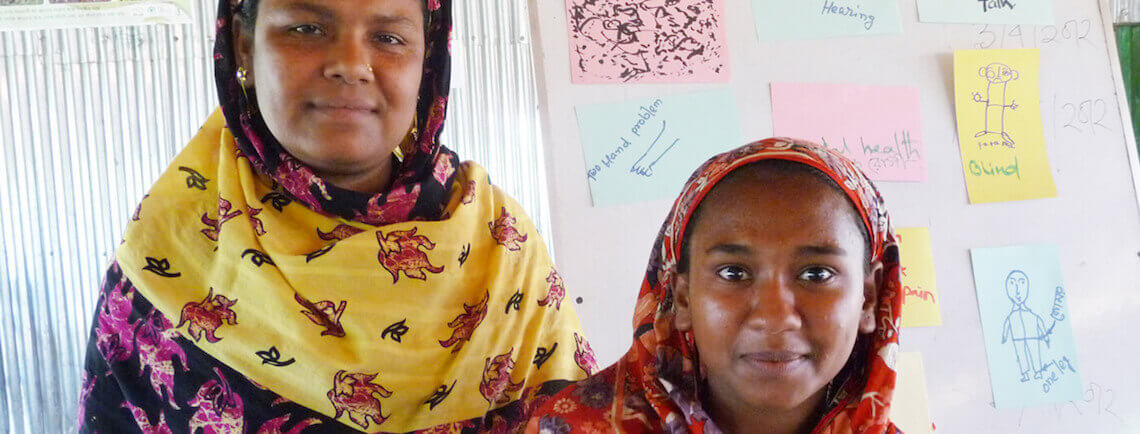More than 60 million people have been forced to flee their homes because of violence and conflict; at least 9 million of them are likely to be persons with disabilities. The vast majority of people displaced by conflict are women, children, and youth.
Over and over, we see that humanitarian crises result in enormous risks to women and girls in the form of rape, assault, intimate partner violence, early marriage, and all forms of exploitation.
The risks, dangers, and challenges are worse for displaced women and girls with disabilities.
We know from our work that:
- they remain one of the most vulnerable and socially excluded groups in any displaced community;
- sometimes they are hidden away in shelters or in their own homes, where they repeatedly experience violence at the hands of partners, family members, or other members of the community;
- because of communication and environmental barriers, these women and girls have an even harder time getting the assistance they need.
But the biggest barrier without a doubt is stigma and discrimination. This is why the risks to women and girls with disabilities are rarely recognized by humanitarian actors. They refer these women and girls to programs for persons with disabilities, often failing to consider the needs they have because of their gender.
These same negative attitudes also mean that the skills, capacity, and potential of women and girls with disabilities are often overlooked. This is one of the biggest lessons for the Women's Refugee Commission (WRC). It has shaped the way we work with women and girls in crises and also the partnerships through which we work.
It is the reason we are committed to identifying and documenting positive practices and approaches to the inclusion of women and girls with disabilities in all our program areas – whether it be our gender-based violence programming, sexual and reproductive health programs, women’s empowerment initiatives, or programs for adolescents and youth.
We are working side by side with women and girls with disabilities to help identify gaps as well as solutions. They might be members of our research team, designing and conducting group discussions with refugees. They might be participants in stakeholder workshops to develop humanitarian action plans. They might be our allies, as we work collectively to advocate for the rights of women with disabilities in global forums, such as the 9th Conference of State Parties to the Convention on the Rights of Persons with Disabilities, currently underway at the United Nations in New York.

Representatives from the Network of African Women with Disabilities and the South Asian Disability Forum
attending the COSP9. L-R: Geden Singo (sign language interpreter); Tungi Mwanjala; Jane Kihungi;
Leah Kihungi (assistant); Abia Akram; Maira Fakhar (assistant)
National and local organizations of women with disabilities can make such a critical contribution – truly, a lifesaving contribution – in these situations of crisis and conflict by raising awareness about disability issues with traditional humanitarian actors, by proving technical support and by monitoring basic protection concerns within the population.
That’s why the WRC is pushing for:
- donors to increase funding to women-led organizations of persons with disabilities from countries affected by crisis, so they can engage more in humanitarian response;
- disability and women’s rights organizations to increase capacity building programs and promote the leadership of women with disabilities ;
- traditional humanitarian actors to seek technical advice and support from women with disabilities – recruit them as staff and community volunteers in humanitarian programs.
“Working to improve our own futures”: Strengthening Networks of Women with Disabilities in Humanitarian Action



